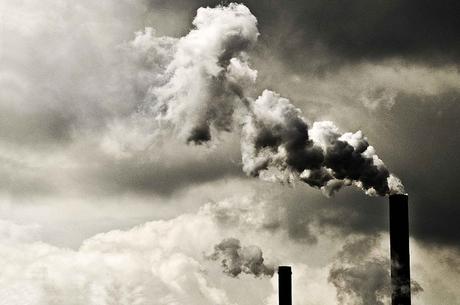The U.S. has the cleanest air, was not a true statement tweeted by President Donald Trump. Instead, U.S. air pollution has worsened under him with rank 10th, a reversal after steady improvement during the Obama-era with significant implications on the health of the population, a new study says.
National Bureau of Economic Research issued a report that found fine particle air pollution, known as PM2.5, from 2009 to 2016, dropped by 24.2 percent. However, it increased by 5.5 percent each year on average in the following two years. It is a matter of concern as PM2.5 can easily enter the respiratory tract and get absorbed into the bloodstream for its microscopic size.

“The health implications of this increase in PM2.5 between 2016 and 2018 are significant,” the study’s abstract says. “The increase was associated with 9,700 additional premature deaths in 2018. At conventional valuations, these deaths represent damages of $89 billion.”
The several causes for reverse in trend include deregulation of industry, loosening of the Clean Air Act, and an increase in wildfires. Karen Clay and Nicholas Muller, economists from Carnegie Mellon University, performed the study.
Clay and Muller wrote that the growth of the U.S. economy, along with looser regulations, has led to an increase in pollution-emitting vehicles on the roads like diesel-powered trucks and others, and also boosted carbon emissions by manufacturers, as CBS News reported.
“The chemical composition of particulates point to increased use of natural gas and to vehicle miles traveled as likely contributors to the increase” in pollution, the economists wrote, as CBS News reported. “We conclude that the effect is due to diesel vehicles as well as some industrial boilers.”
As The Washington Post reported, fine particles are found dangerous that damage lung, collect in the brain, and send people for the emergency services. The airborne particles result in dementia and cognitive decline in older people who appear to be especially susceptible to PM2.5, data shows. These impacts are felt at levels far below the current regulatory threshold.
In the west, mainly in California, the increases in the particulate matter were high. Since a large segment of the population was exposed to wildfires and vehicular pollution, California experienced a substantial increase in particulate matter, the authors noted, and the state represented “a large share of the increase in premature mortality,” as the non-profit StreetsBlog reported.
“Because of these large increases and the large exposed population in California, we find that nearly 43% of the increase in deaths nationally from 2016 to 2018 occurred in California,” the study authors said, as CBS News reported.
However, wildfires are not the culprit. Even without the devastating fires that engulfed California last November, the economists ran the numbers. They found that the wildfires are not behind the general decline in air quality and the reversal of the air pollution trend, according to the Cal StreetsBlog.
Last year, EPA Administrator Andrew Wheeler disbanded the expert academic panel that reviewed and advised the agency on its standards for small-particle air pollution. In its place, consultants are hired with links to the fossil fuel, pharmaceutical, and tobacco industries. The disbanded academic panel convened independently this year and advised the agency to impose stricter regulations to fight the pollutants. In the initial two years of the Trump administration, Clean Air Act enforcement actions fell. However, the researchers note that the lax enforcement trend started well before 2017.
The demand for coal declined, but it has not been enough help to offset the rise in emissions. It is because people are driving more, the usage of natural gas increased, and the number of trucks crisscrossing the country and idling on city streets also increased, according to the Washington Post.
According to the study authors, our understanding of the damaging impact of air particulate matter on human health has grown due to an alarming series of findings on the harm caused by pollutant exposure in the past five or ten years. The recent wave of the rollback of regulatory enforcement by the Environmental Protection Agency “is concerning in light of the increases in air pollution” since 2016, as the Washington Post reported.

